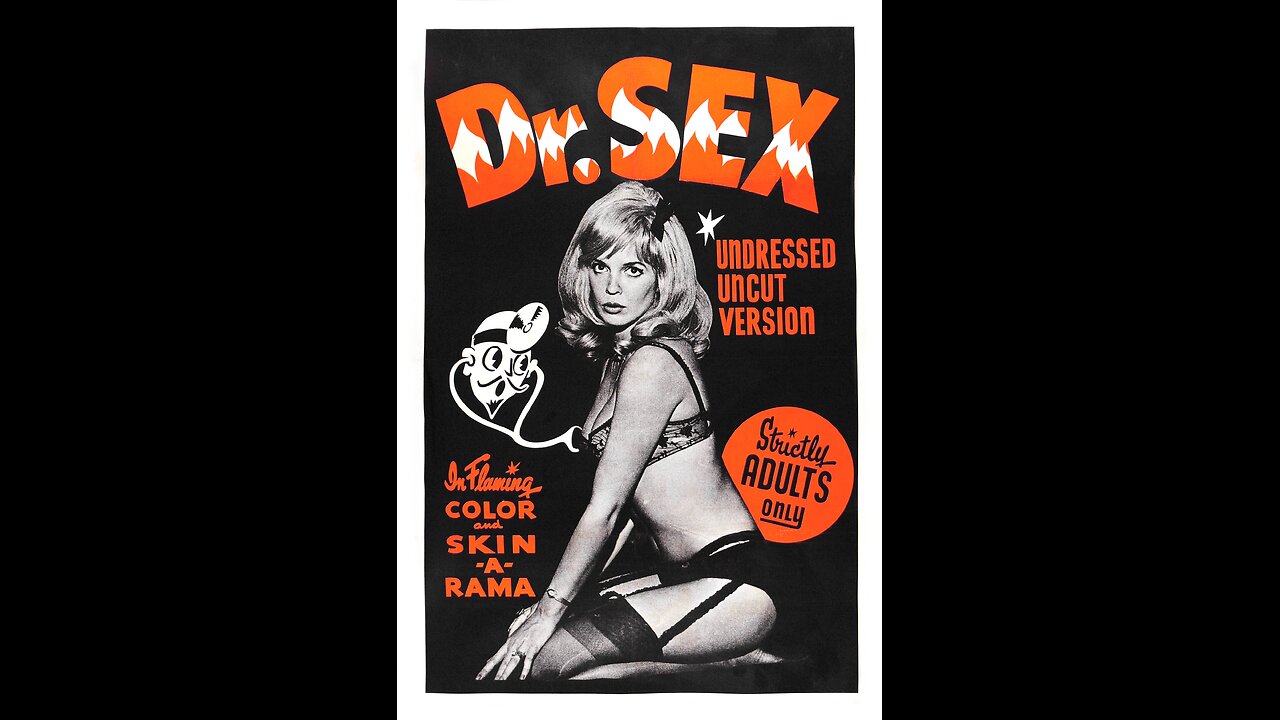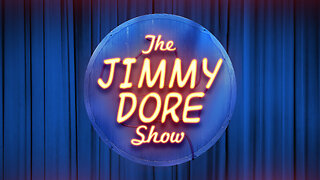Premium Only Content

Dr. Sex, 1964. Directed by Ted V. Mikels
Warning: Dr. Sex (1964) contains no explicit sexual scenes, and its purpose is not to promote pornography. Instead, this film serves as a historical reflection of how topics of sexuality and nudity were approached in the 1960s within the nudie cutie and sexploitation genres, blending humor and titillation with a lighthearted, moralistic tone.
Dr. Sex, released in 1964, is a quintessential "nudie cutie" film, a subgenre of sexploitation cinema that emerged in the late 1950s and thrived through the early 1960s in the United States. Directed by Ted V. Mikels (credited as Theo Mikacecci in some instances), this low-budget feature exemplifies the era’s fascination with presenting gratuitous nudity under the thin veneer of a narrative, often marketed as comedic or educational to skirt censorship laws. With a runtime of approximately 62 minutes and a file size of 954.7M in some digital archives, the full movie serves as a time capsule of mid-20th-century exploitation filmmaking, blending soft-core titillation with absurd humor.
The plot revolves around three psychiatrists—Dr. Sex (Victor Izay), Dr. Lovejoy (Julia Calda), and Dr. Schmutz (Max Joseph)—who gather to discuss their most bizarre and sexually charged cases. The premise is little more than a framing device, allowing the film to segue into a series of vignettes that showcase nudity and risqué scenarios. Each doctor recounts a peculiar patient story, and these tales are the heart of the movie’s appeal, delivering on the sexploitation promise of stripping and voyeuristic thrills. The narrative is intentionally flimsy, as the real draw is the opportunity to "look at nude women," as noted in its description as a nudie cutie exploitation movie.
One of the standout cases involves a peeping tom scenario, where a patient secretly observes a woman undressing and bathing. The twist, revealed later, is that the voyeur is actually a dog, adding a layer of absurdity typical of the genre’s playful tone. This segment caters to the peeping tom trope, offering viewers a voyeuristic fantasy while maintaining a lighthearted, almost farcical approach to nudity. The woman’s slow, deliberate disrobing—removing her clothes piece by piece—embodies the stripping motif, a staple of nudie cuties designed to prolong the visual spectacle.
Another vignette features a man obsessed with mannequins, imagining them as living women who come to life when undressed. This case blends stripping with a surreal twist, as the patient’s fantasies lead to scenes of nudity that blur the line between reality and imagination. The third story introduces a nude model with exhibitionist tendencies, further amplifying the film’s focus on bare skin and provocative situations. Her case provides ample opportunity for the camera to linger on her body, fulfilling the sexploitation ethos of showcasing as much nudity as the era’s censors would allow.
Dr. Sex is unabashedly a product of its time, shot in color (uncommon for some low-budget efforts of the period) and featuring a cast of relatively unknown actors. The production values are minimal, with stilted dialogue and amateurish performances, but these qualities enhance its charm as a relic of early sexploitation cinema. The soundtrack, often generic sensual music, underscores the nudity-heavy scenes, aiming to maintain an erotic yet comedic atmosphere. Ted V. Mikels, who would later gain notoriety for grindhouse classics like The Corpse Grinders and Astro-Zombies, brings an unpolished energy to the film, prioritizing visual titillation over narrative coherence.
The movie’s appeal lies in its innocence compared to modern standards—there’s no explicit sexual content, only teasing nudity and suggestive scenarios. It reflects the pre-pornography era when filmmakers relied on innuendo and bare flesh to captivate audiences desperate for forbidden thrills. Marketed as a comedy with a pseudo-scientific veneer, Dr. Sex straddles the line between exploitation and entertainment, offering a mix of bad puns, googly-eyed special effects (like a psychiatrist’s eyes popping out at the sight of a sexy woman), and a parade of topless women.
For fans of vintage cinema, Dr. Sex is a fascinating artifact, showcasing the nudie cutie genre’s blend of stripping, peeping tom fantasies, and nudity within a framework of absurd storytelling. It’s a full movie experience that doesn’t pretend to be high art but revels in its own tawdry charm. If you enjoyed this breakdown of Dr. Sex, don’t forget to like and subscribe to the channel for more dives into the wild world of exploitation films!
-
 LIVE
LIVE
TimcastIRL
1 hour agoTrump SLAMS Democrats Over Irina Zarutska Killing, Says WAR Over Chicago Crime | Timcast IRL
23,355 watching -
 LIVE
LIVE
SpartakusLIVE
3 hours agoNONSTOP Snipes, Rockets, and BICEPS = Monday MOTIVATION
267 watching -
 LIVE
LIVE
Rallied
4 hours ago $0.58 earnedSolo Challenges All Day
205 watching -
 LIVE
LIVE
The Jimmy Dore Show
3 hours agoHolocaust Museum DELETES “Never Again” Post! Rand Paul Calls JD Vance Despicable! w/ Anthony Aguilar
8,079 watching -
 1:47:36
1:47:36
Glenn Greenwald
3 hours agoJD Vance and Rand Paul Clash on Due Process: War on Terror Echoes; Has the U.S. Given Up on Confronting China? Ben Shapiro's Latest Falsehoods About Israel | SYSTEM UPDATE #510
60.8K29 -
 LIVE
LIVE
Nerdrotic
12 hours ago $2.49 earnedNerdrotic Nooner 513
375 watching -
 LIVE
LIVE
BigTallRedneck
1 hour agoRANKED FINALS W OMEGA
79 watching -
 LIVE
LIVE
Eternal_Spartan
9 hours ago🟢 Eternal Spartan Plays Final Fantasy 7 Rebirth Ep. 3 | USMC Vet | Join the Best Chat on Rumble
39 watching -
 LIVE
LIVE
megimu32
1 hour agoOTS: Ace Ventura & The Death of 90s Comedy
107 watching -
 LIVE
LIVE
We Like Shooting
14 hours agoDouble Tap 426 (Gun Podcast)
81 watching